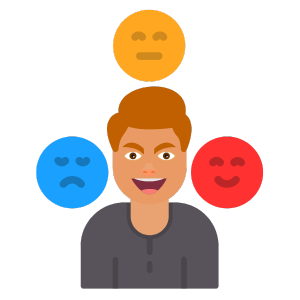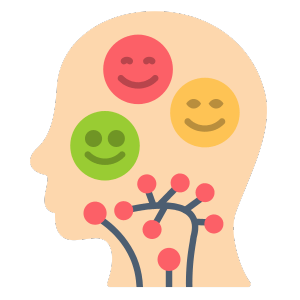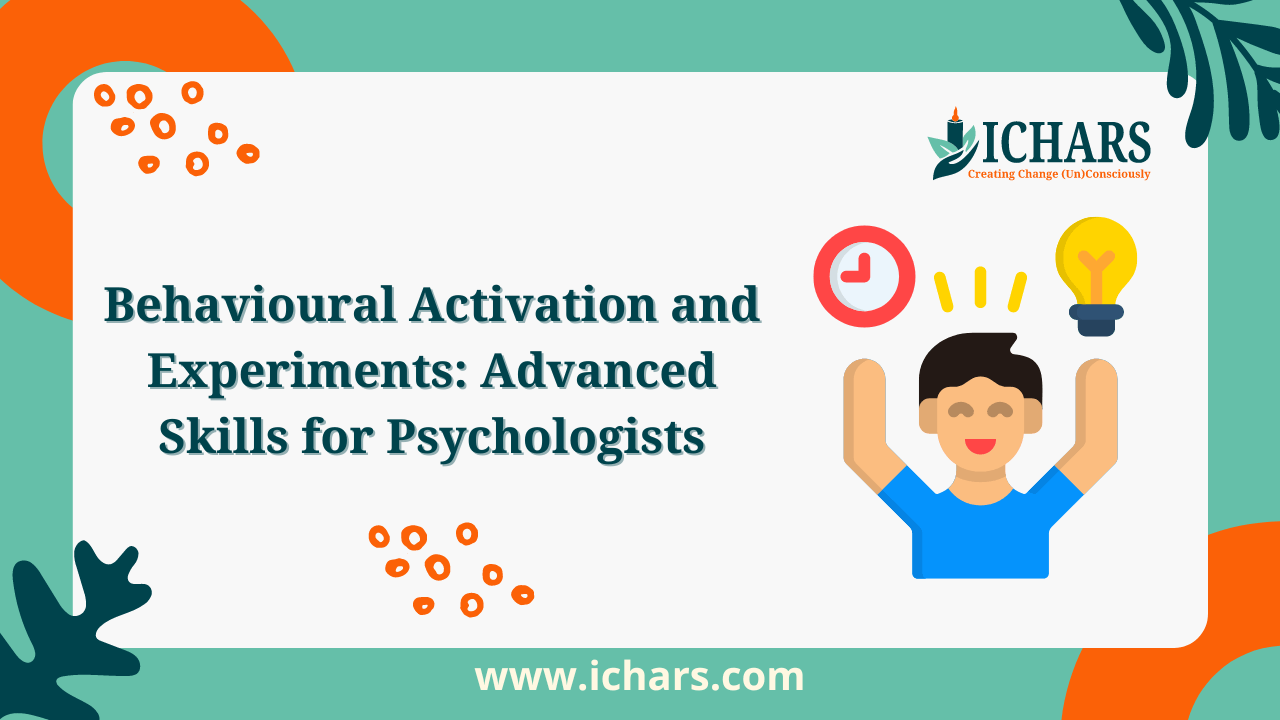Definition and Importance
Behavioural Activation (BA) is a therapeutic approach designed to help clients overcome emotional and behavioural challenges by encouraging engagement in meaningful activities. Originating from cognitive-behavioural therapy (CBT), BA focuses on increasing clients’ contact with positively reinforcing activities, thereby reducing depressive symptoms and enhancing overall well-being. For practicing psychologists, mastering BA techniques is crucial for providing effective, evidence-based treatment that addresses the root causes of clients’ struggles.
Understanding Behavioural Activation

Behavioural Activation has its roots in behaviour therapy, evolving significantly since its inception in the 1970s. Initially used to treat depression, BA has expanded to address various psychological disorders by focusing on the interplay between behaviour and mood.
Core Principles
The core principles of BA revolve around the idea that avoiding activities due to low mood leads to decreased positive reinforcement and further withdrawal. Key concepts include:
- Activity Monitoring: Identifying activities that influence mood.
- Activity Scheduling: Planning and engaging in positive activities.
- Functional Analysis: Understanding the relationship between actions and emotional responses.
Mechanisms of Action
BA works by breaking the cycle of avoidance and inactivity. By systematically increasing engagement in meaningful activities, clients experience improved mood and reduced symptoms. This behavioural change reinforces a positive feedback loop, promoting long-term recovery.
Practical Application of Behavioural Activation

Assessment and Identification
Effective BA begins with a thorough assessment of the client’s current activity levels and identification of target behaviours. Psychologists should:
- Use structured interviews and self-report measures to gather data.
- Identify behaviours that are reinforcing depressive symptoms.
Setting Goals
Setting specific, measurable, achievable, relevant, and time-bound (SMART) goals is essential in BA. Collaboratively working with clients, psychologists should:
- Define clear, attainable objectives.
- Break down larger goals into manageable steps.
Activity Monitoring and Scheduling
Monitoring activities helps clients become aware of how their behaviours affect their mood. Techniques include:
- Keeping detailed activity logs.
- Scheduling daily and weekly activities that align with the client’s values and interests.
Behavioural Experiments
Behavioural Experiments are a cognitive-behavioural technique used to test beliefs and assumptions through experiential learning. They help clients gather evidence to challenge unhelpful thoughts and develop more adaptive perspectives.
Types of Behavioural Experiments
- Hypothesis-Testing Experiments
- Belief Testing: Clients test the validity of their negative beliefs by engaging in activities that challenge those beliefs.
- Outcome Prediction: Clients predict the outcomes of certain behaviours and then test to see if their predictions are accurate.
- Exploratory Experiments
- New Activity Exploration: Clients try new activities to discover what effects they have on their mood and anxiety levels.
- Behavioural Sampling: Clients engage in a variety of behaviours to identify which ones have positive or negative effects.
- Behavioural Activation Experiments
- Scheduling Pleasant Events: Clients schedule and engage in activities they find enjoyable to see how these activities impact their mood.
- Activity Monitoring: Clients track their activities and corresponding mood changes to identify patterns and triggers.
- Exposure Experiments
- Cognitive Restructuring Experiments
- Thought Record Experiments: Clients keep a record of their thoughts, the evidence for and against these thoughts, and the outcomes of acting on these thoughts.
- Reframing Tasks: Clients practice reinterpreting situations in a more positive or realistic light and observe the outcomes.
- Social Experiments
- Social Skills Practice: Clients engage in social situations to practice and observe the effects of different social skills.
- Role Reversal: Clients take on different social roles to gain perspective and test assumptions about social interactions.
- Behavioural Rehearsal Experiments
- Role-Playing: Clients role-play challenging scenarios to practice new behaviours and coping strategies.
- Imaginal Rehearsal: Clients visualize engaging in certain behaviours and anticipate outcomes.
- Mindfulness and Acceptance Experiments
- Mindfulness Practice: Clients practice mindfulness techniques to observe their thoughts and feelings without judgment.
- Acceptance Tasks: Clients engage in activities while practicing acceptance of their thoughts and emotions to see how it affects their experience.
- Graded Task Assignments
- Step-by-Step Exposure: Clients break down challenging tasks into smaller steps and gradually work through them.
- Skill Building: Clients engage in progressively more challenging tasks to build confidence and competence.
- Value-Driven Experiments
- Value Clarification: Clients engage in activities aligned with their values and observe how this impacts their sense of purpose and satisfaction.
- Value-Based Actions: Clients take actions that are consistent with their values to test how this affects their overall well-being.
- Self-Compassion Experiments
- Self-Kindness Tasks: Clients practice self-compassionate behaviours and observe the impact on their self-esteem and mood.
- Compassionate Imagery: Clients use guided imagery to foster feelings of self-compassion and assess its effects.
- Interpersonal Experiments
- Assertiveness Training: Clients practice assertiveness in various situations and evaluate the outcomes.
- Communication Skills: Clients work on improving communication skills in relationships and observe changes in interpersonal dynamics.
- Behavioural Substitution Experiments
- Healthy Habit Substitution: Clients replace unhealthy behaviours with healthier alternatives and monitor the effects.
- Behavioural Inhibition: Clients deliberately inhibit certain behaviours to see if alternative behaviours emerge.
- Cognitive-Behavioural Experiments
- Thought Stopping: Clients practice interrupting negative thought patterns and observe the changes in their behaviour and mood.
- Behavioural Challenge: Clients challenge themselves to engage in behaviours that contradict their negative beliefs and track the outcomes.
- Emotional Regulation Experiments
- Emotion Identification: Clients identify and label their emotions in different situations and explore how this awareness affects their reactions.
- Distress Tolerance Tasks: Clients engage in activities designed to increase their tolerance for distressing emotions.
Integrating Behavioural Activation and Experiments
Combining Techniques for Maximum Impact
Integrating BA with Behavioural Experiments allows for a powerful combination of strategies that target both behaviour and cognition. By using experiments to challenge beliefs while engaging in positive activities, clients can achieve comprehensive change.
Case Studies and Examples
- Case Study 1: A client with social anxiety might use BA to increase social interactions while conducting experiments to test beliefs about rejection.
- Case Study 2: A client with depression could schedule enjoyable activities and use experiments to challenge beliefs about their ability to experience pleasure.
Challenges and Solutions
Common challenges in integrating BA and experiments include client resistance and difficulty in identifying suitable activities. Solutions involve:
- Providing psychoeducation about the benefits of BA and experiments.
- Gradually introducing changes to build client confidence.
Advanced Skills and Techniques
Customization for Individual Clients
Tailoring BA interventions to individual client needs enhances their effectiveness. Psychologists should consider:
- Personalizing activity schedules based on client interests and values.
- Adapting experiments to address specific cognitive distortions.
Innovative Strategies
Incorporating the latest advancements in BA can improve outcomes. Innovative approaches include:
- Utilizing technology for activity monitoring (e.g., apps and wearables).
- Combining BA with mindfulness techniques to enhance engagement.
CHP Integration
Cognitive Hypnotic Psychotherapy (CHP) offers several effective techniques to bolster Behavioural Experiments and Activation:

- Hypnosis for Relaxation and Focus: Induces relaxation to reduce anxiety and resistance, enhancing openness to behavioural tasks.
- Visualization and Imagery: Helps clients mentally rehearse new behaviours, boosting confidence and readiness to engage in behavioural experiments.
- Meta Model: Clarifies and challenges limiting beliefs, promoting realistic perspectives and increasing willingness to try new behaviours.
- Parts Integration: Resolves internal conflicts, aligning motivations and reducing resistance to behavioural change.
- Mindfulness Techniques: Cultivates present-moment awareness, fostering clarity and acceptance during behavioural tasks.
Integrating these CHP techniques enhances clients’ readiness for change, optimizes therapeutic interventions, and supports lasting behavioural transformation.
Conclusion
Behavioural Activation and Behavioural Experiments are powerful tools in a psychologist’s repertoire, offering significant benefits for both clients and practitioners. By integrating these techniques with Cognitive Hypnotic Psychotherapy, psychologists can provide a comprehensive and highly effective therapeutic approach.
This integration not only improves client outcomes but also enhances professional satisfaction and career growth. For those looking to expand their therapeutic skills, exploring the Cognitive Hypnotic Psychotherapy Approach can provide a valuable and enriching addition to your practice.
Investing time in mastering these techniques will lead to a more fulfilling and successful career in psychology, enabling you to make a lasting positive impact on your clients’ lives.

